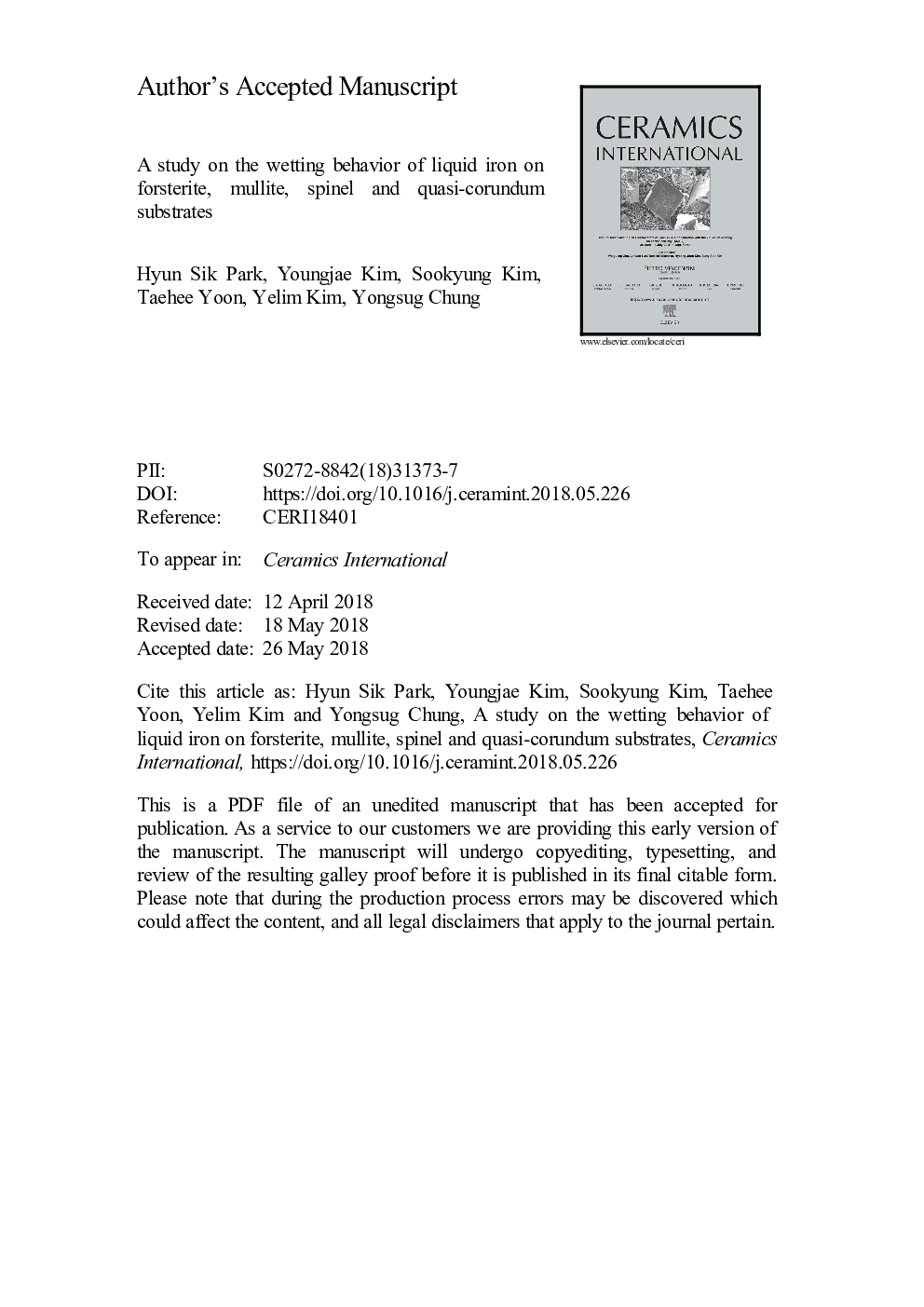| Article ID | Journal | Published Year | Pages | File Type |
|---|---|---|---|---|
| 8948426 | Ceramics International | 2018 | 28 Pages |
Abstract
Wetting characteristics of liquid iron on magnesia, alumina and silica mixture substrates were studied by sessile drop experiments. Chromium-free forsterite, mullite, spinel and quasi-corundum phases were selected as alternative refractories in MgO-Al2O3-SiO2. Morphological changes of molten electrolytic iron on the oxide substrates were investigated via apparent contact angle measurements. The results showed that the wetting behavior was significantly influenced by FeO compounds that were formed via oxidation of the liquid iron. Morphologies of the reacted layer were studied by Scanning Electron Microscope (SEM)/EDX analysis. The ternary phases FeO-MgO-SiO2 and FeO-Al2O3-SiO2 improved the wetting of liquid iron on the forsterite and mullite substrates by providing liquid phases at solid (refractory)-liquid (iron) interfaces. However, corrosion by liquid iron was significantly inhibited at spinel phase which did not feature FeO based compounds at the interface. Quasi-corundum (10MgO-25SiO2-65Al2O3) showed a much enhanced resistance to liquid iron compared to forsterite or mullite refractories.
Related Topics
Physical Sciences and Engineering
Materials Science
Ceramics and Composites
Authors
Hyun Sik Park, Youngjae Kim, Sookyung Kim, Taehee Yoon, Yelim Kim, Yongsug Chung,
